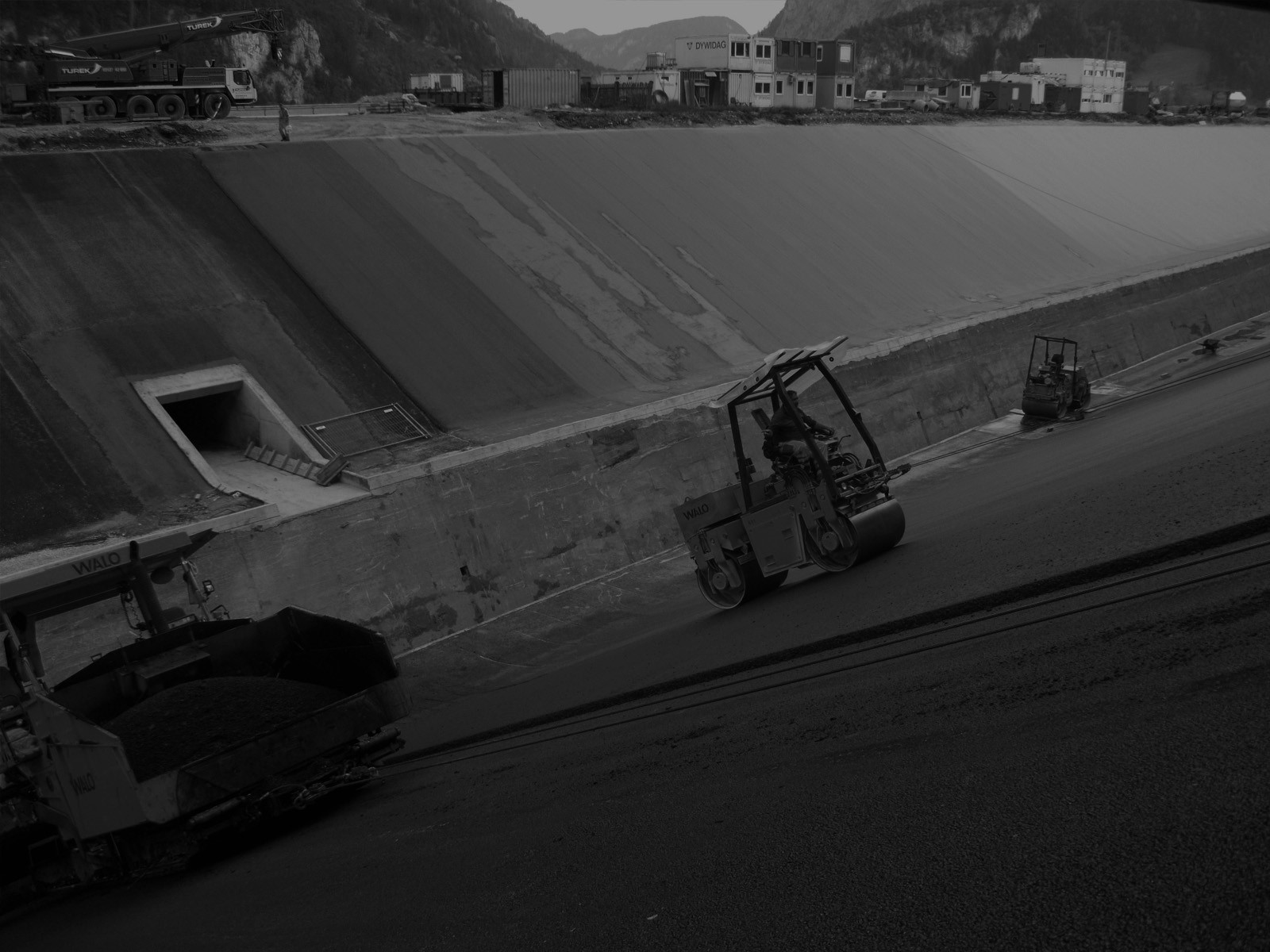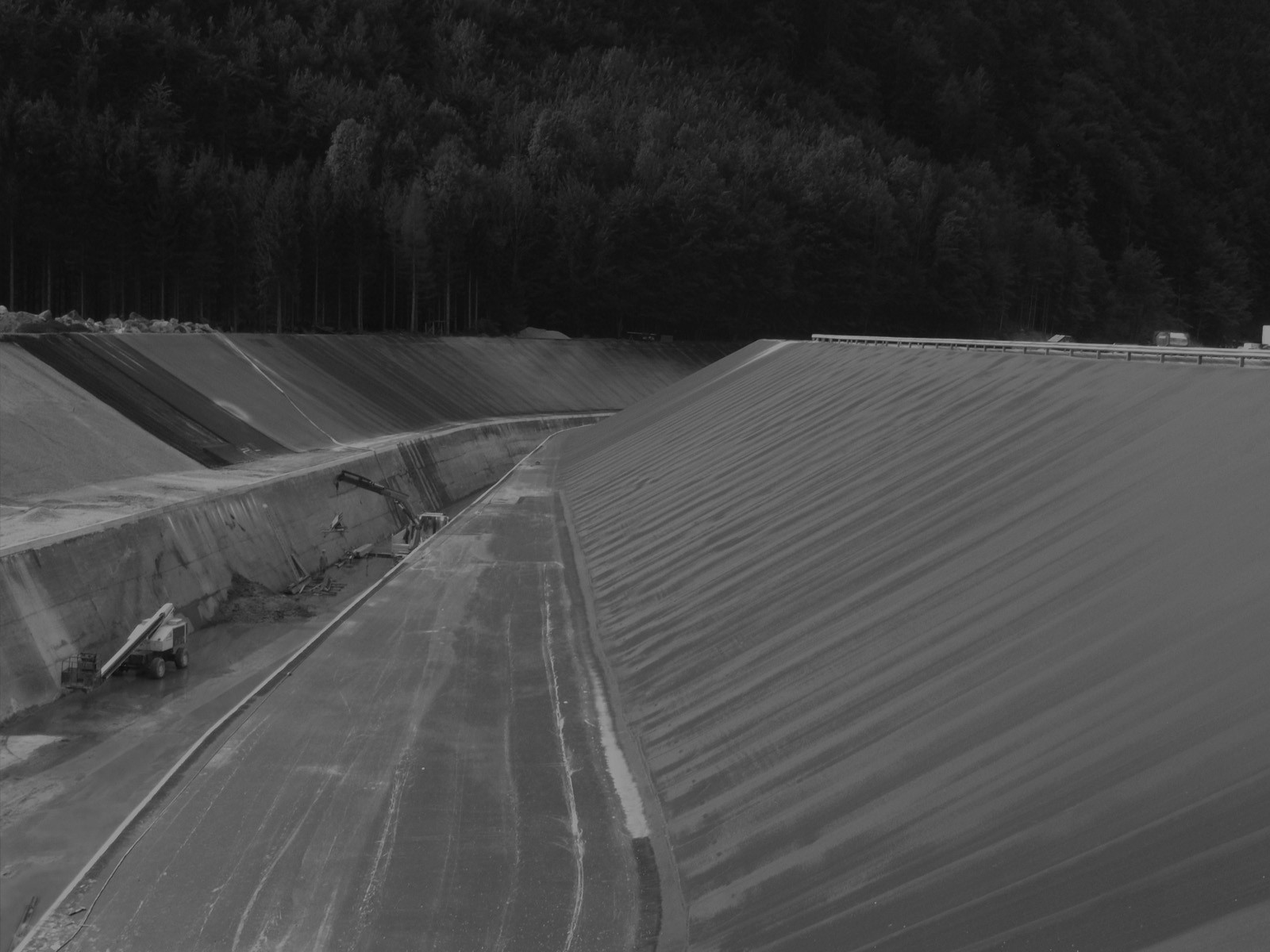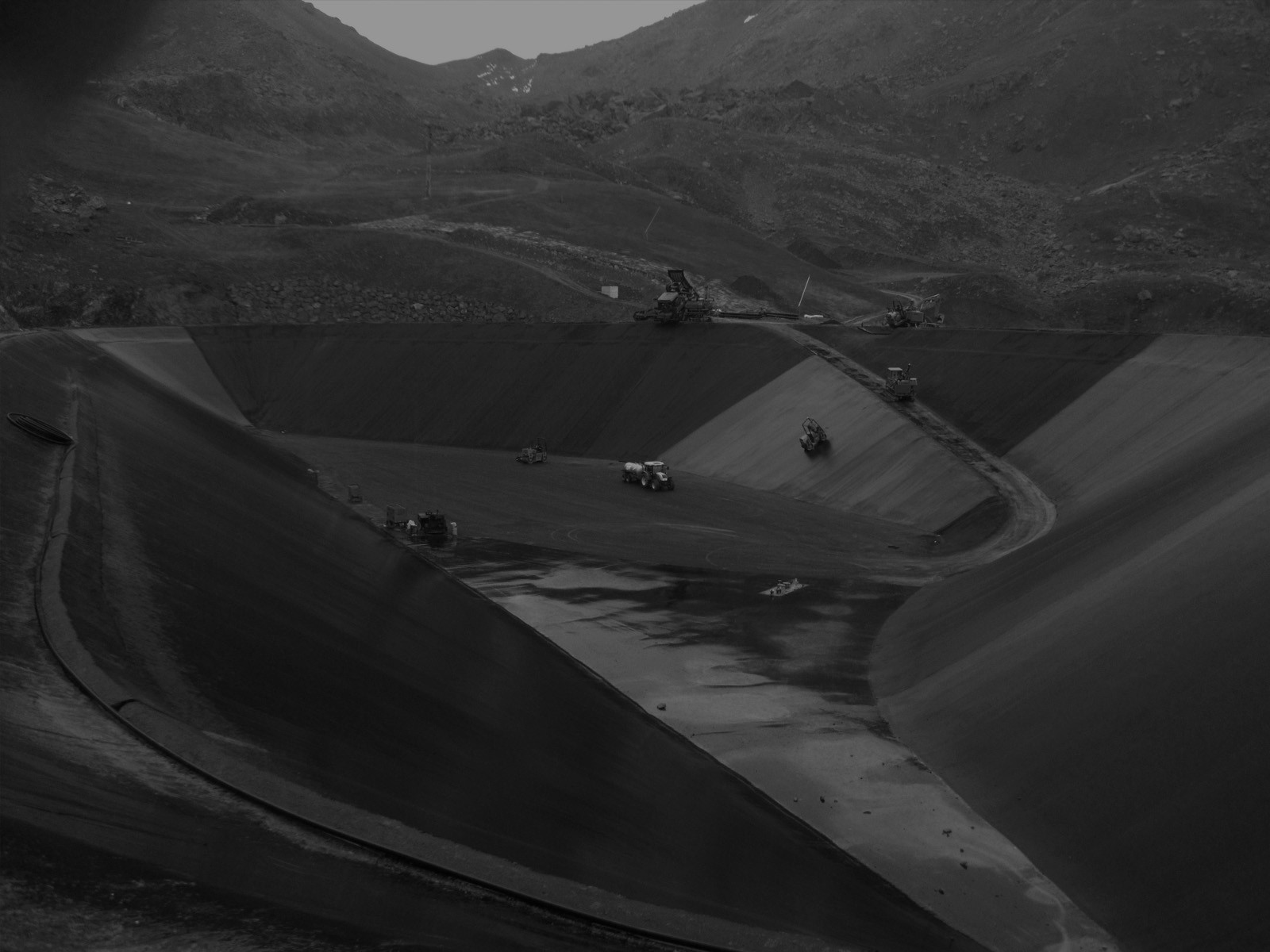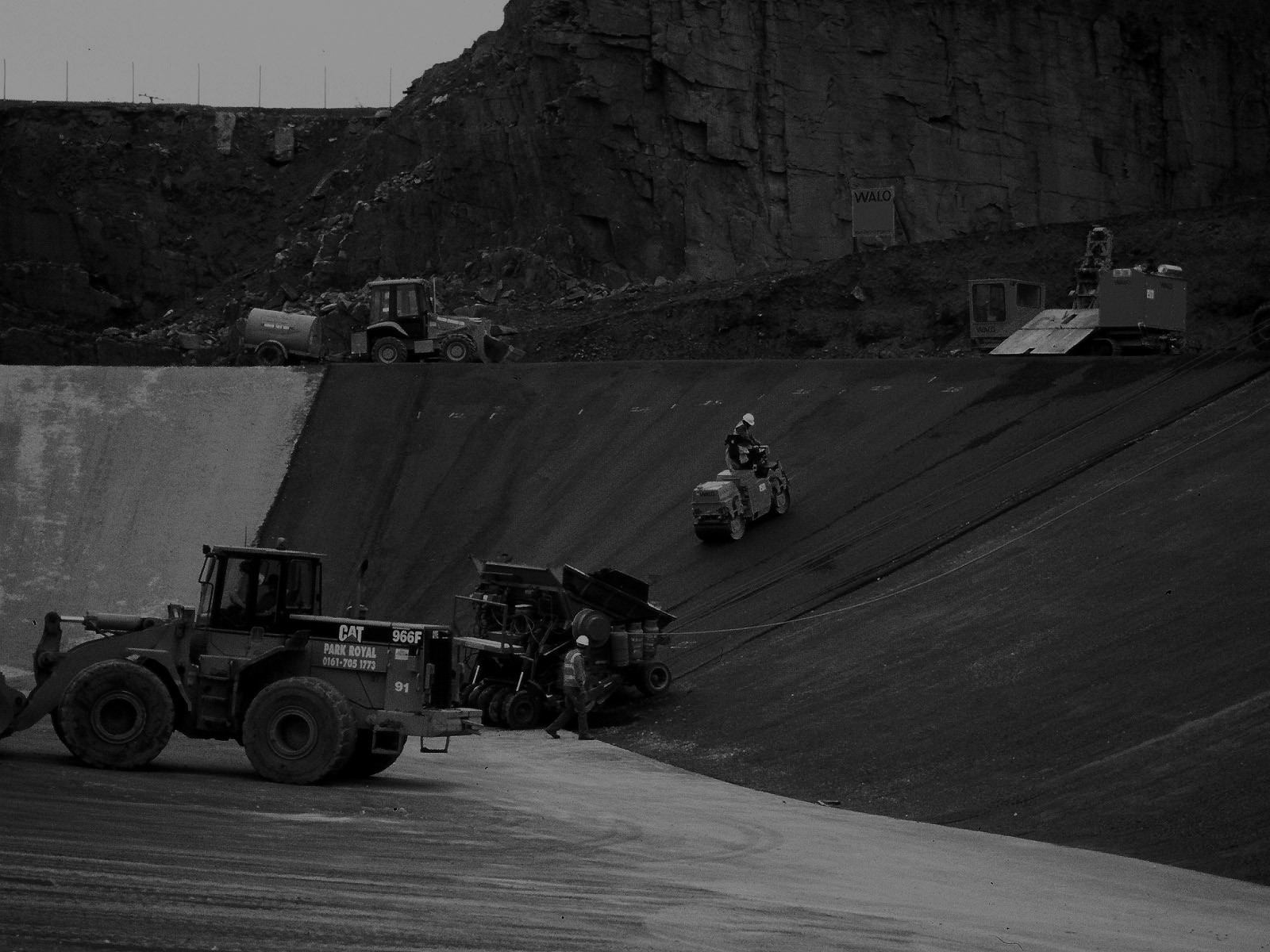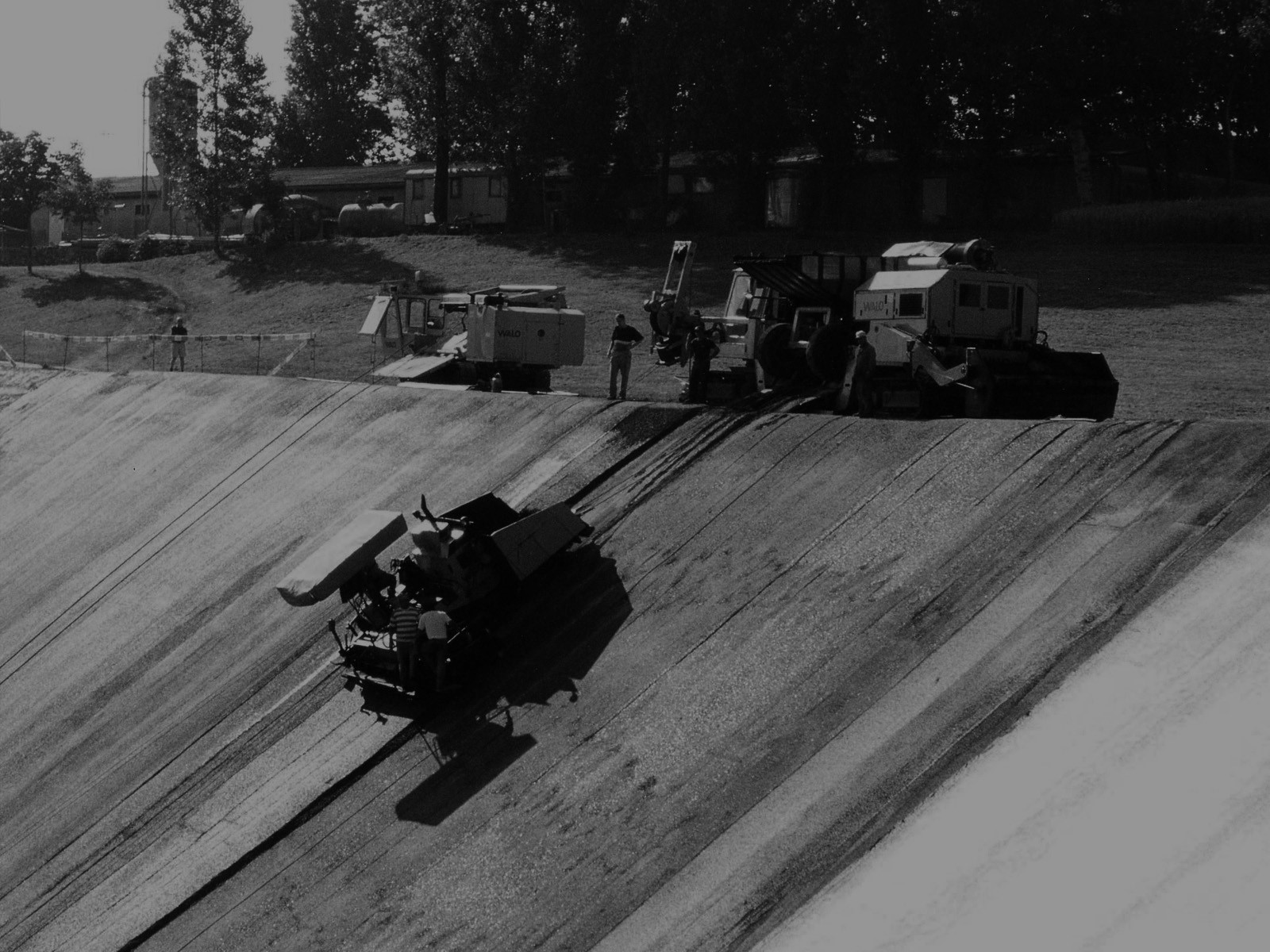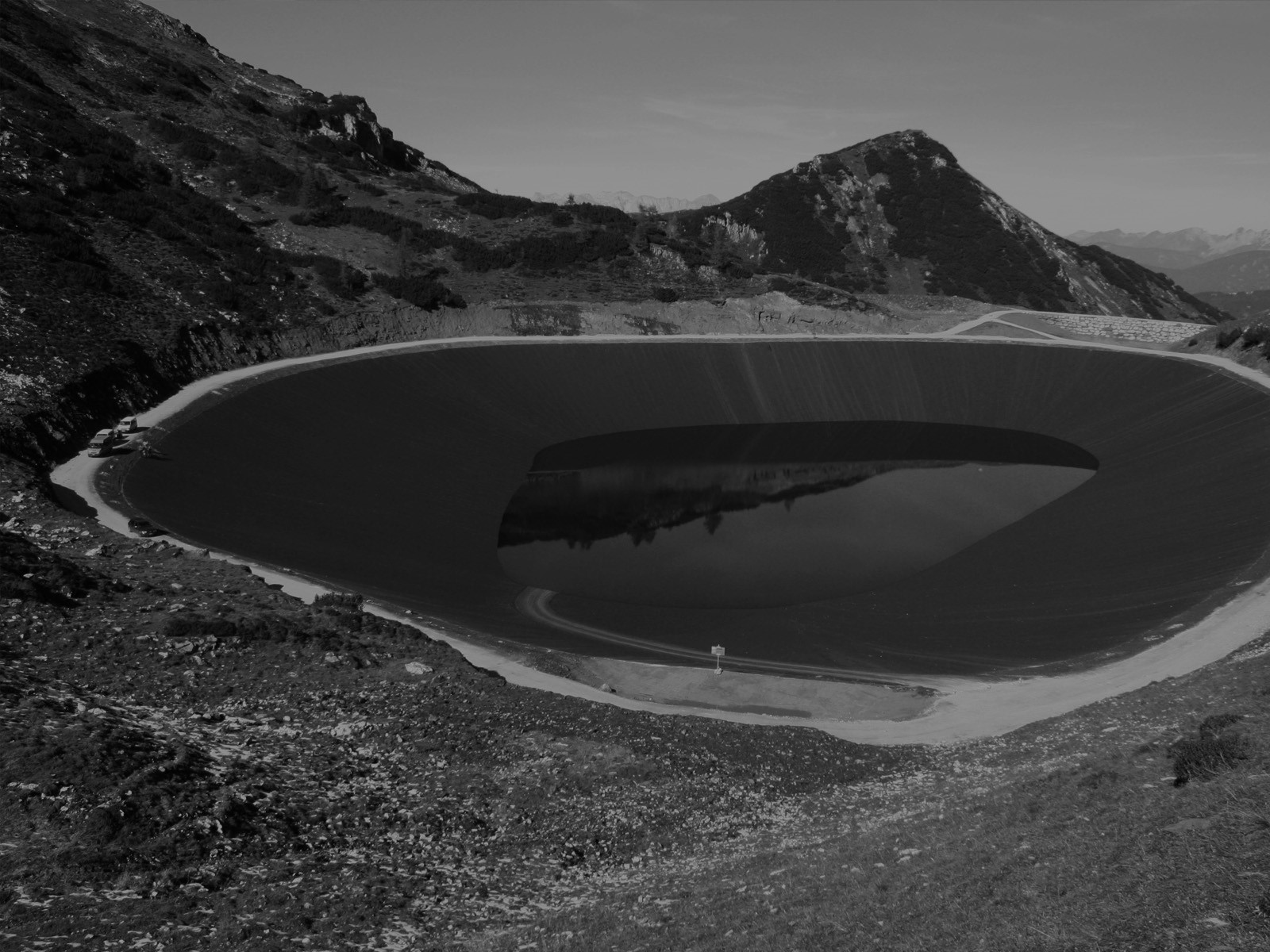Constructing Embankment Cores with Dense Asphaltic Concrete
Dense Asphaltic Concrete (DAC) comprises an asphaltic mixture, consisting of bitumen and a continuously graded aggregate, installed using specialised equipment and laying and compaction techniques. DAC is used globally to line upstream dam faces, reservoirs, channels and landfill. For over 50 years DAC has been successfully used as a specialist method of constructing an impermeable central core liner to seal large embankment dams. Today there are over 100 such dams around the world.
Why use DAC to construct a core for an earth embankment dam?
- DAC provides a highly robust, waterproof layer, not prone to subsidence.
- An asphaltic core’s enormous strength prevents any chance of a hydraulic base failure and as it is not exposed to any UV radiation or weathering it does not age so very little ongoing maintenance is required.
- It can withstand huge pressure, while still being thin enough to be flexible.
- The properties of asphaltic concrete can be tailored to specific design criteria so, for example, the mix can be altered to provide extra flexibility and a reduction in cracking, which makes these cores well suited to dams located in earthquake regions or on compressible foundations.
- Asphalt is non-toxic so it is ideal for use in drinking water reservoirs and means it presents no environmental hazards.
- Construction times are shorter compared with clay or moraine cores, reducing cost and enabling the reservoir to be flooded at the earliest opportunity.
- As the core and embankments are constructed simultaneously, water can continue to be impounded during the construction period.
- Installation of an asphaltic core is less affected than either types by bad weather conditions which means works can more easily be kept on schedule.
- This type of asphaltic core can be a preferred sealing method in areas of extreme climatic condition.
- It provides a practical solution if natural sealing materials of appropriate quality are not available locally.
Construction method
Before construction is carried out, WALO carries out extensive testing and experimentation to prove the suitability of the asphaltic core in terms of stability and flexibility.
A watertight wall is constructed in the axis of an embankment using DAC, which is placed simultaneously with the embankment earthworks. The asphalt and the materials for the adjacent transition layers are placed into a core finisher - a highly sophisticated, technologically advanced machine specially developed for this task by WALO’s engineers.
The core finisher travels along the embankment axis and applies both the asphaltic concrete core and the two transition layers or ‘filter zones’ to the centre of the structure at the same time in just one pass. The asphalt layers are laid in layers of 200-250mm thick and are heated using infra-red heating appliances, enabling the layers to be perfectly sealed. The core finisher applies the initial compaction to both the asphalt core and transition layers, with the final compaction being made with vibrating rollers.
As the core is installed at the same time as the embankment earthworks, painstaking co-ordination of all the different activities on site is crucial. Particular attention has to be paid to the exact placing of each layer and the connection to the concrete foundation under the core itself.
To ensure consistent quality standards, the WALO laboratory regularly makes on-site checks of all materials to be used.
WALO has built this type of core liner around the world in a diverse range of locations including Spain, China and Norway.
Agar Dam, Spain
The Agar Dam is located on the River Palancia near Segorbe in Valencia, Spain. The reservoir has a storage capacity of 13 million m3. The earth dam has a 600 mm thick core liner made of DAC – the first of its kind in Spain.
Nierji Dam, China
The Nierji Dam is an embankment dam which impounds the Nen River, on the border of Inner Mongolia and Heilongjiang Province in China. The dam was constructed for several purposes including flood control, water supply and hydro-electricity generation. The reservoir has a volume capacity of over 8 million m3. The dam is over 1,600 m long while the core liner is between 500 and 700 mm thick, covering an area of 29,3000m2.
Skjerkevatn Dam, Norway
When complete, this new dam, which is currently under construction in a remote region of Norway, will be 450 m long and 50 m high, making it the largest dam project undertaken in Norway for many years. Located 843m above sea level, the core liner will be between 500 and 400 mm thick.

